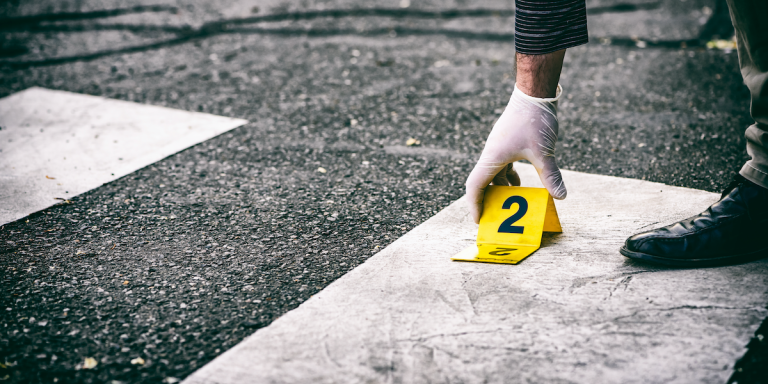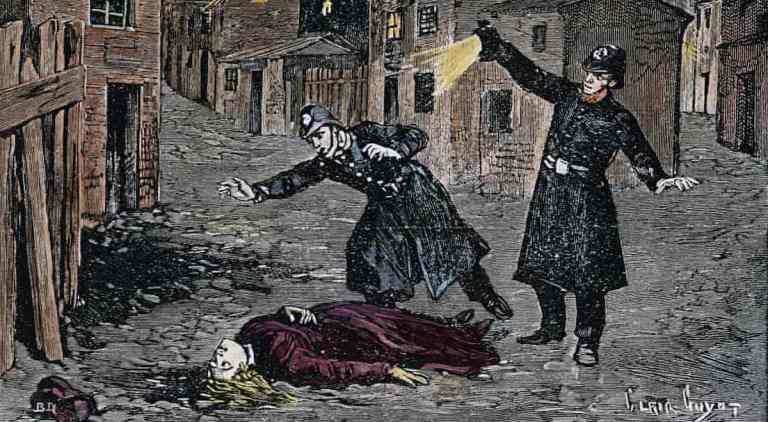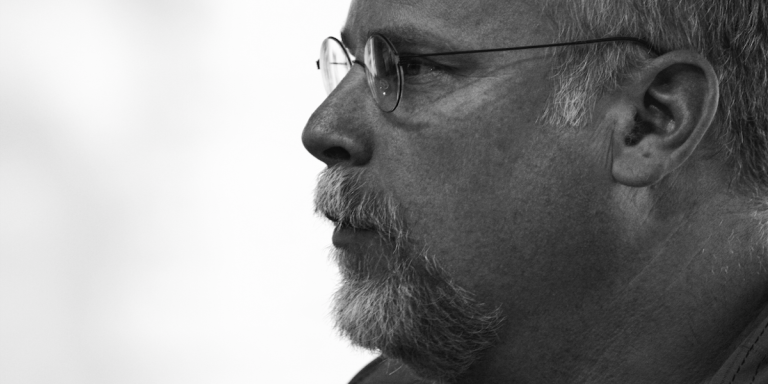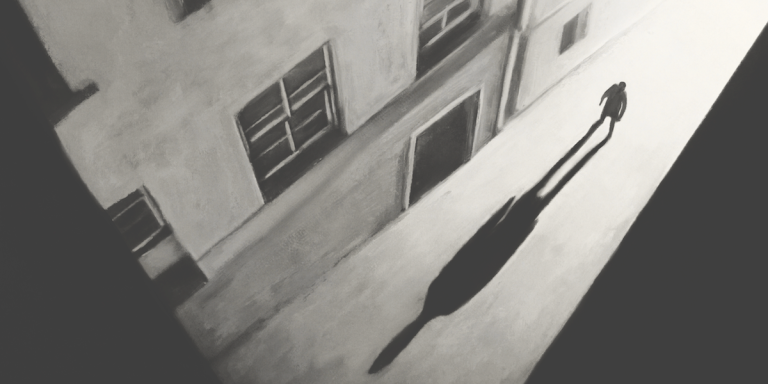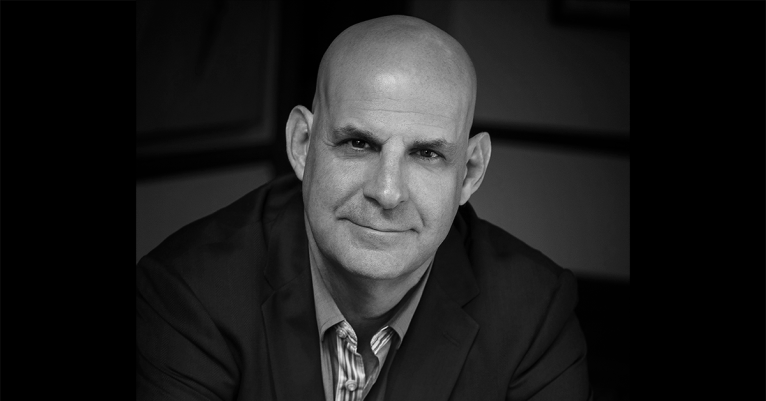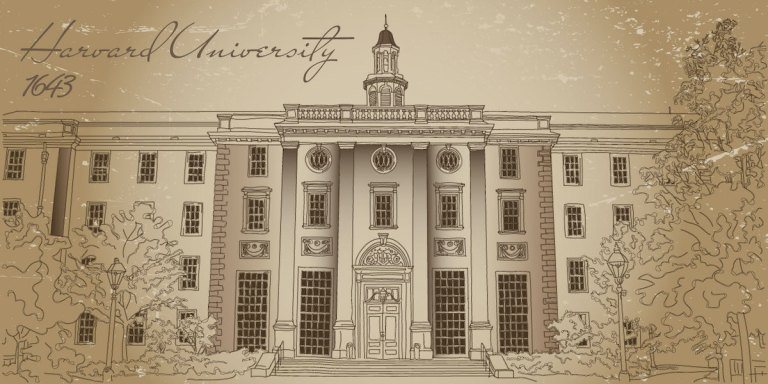A Serial Killer, The Great London Smog, and The Strangling Of A City
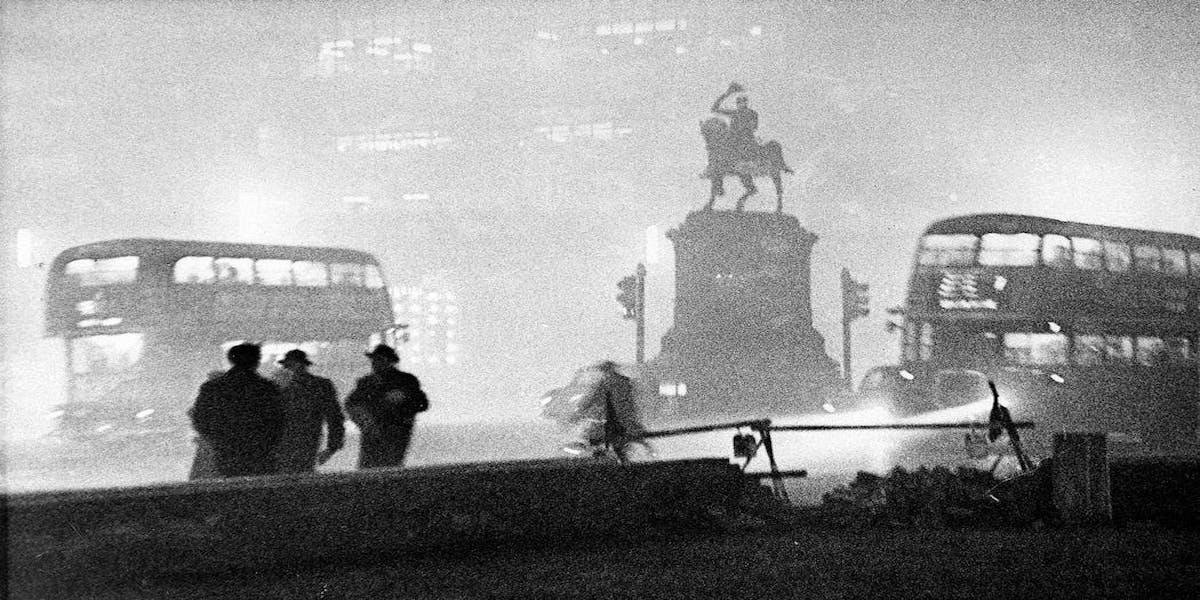
Prologue
The Shiver
Fog everywhere. Fog up the river, where it flows among green aits and meadows; fog down the river, where it rolls defiled among the tiers of shipping and the waterside pollutions of a great (and dirty) city.
—Charles Dickens, Bleak House, 1853
The teenager carefully avoided broken shards of glass, barely held together by cracked window frames, as the mist dampened her hair. She balanced on bricks and gently braced herself against the frame of the house. It was 1952—London’s winter wind, chilly and biting, prompted a shiver that began at her scalp and traveled to her toes. Thirteen-year-old Rosemary Sargent listened for the distant call of her younger brother as the mist thickened into a fog. She hopped across old pieces of wood full of rusty nails—materials that once held together a lovely house just a few homes down from her own. Now it was a bombsite, the perfect playground for mischievous kids hoping to avoid boredom. As she looked at the bricks, she could recall what her life had been like during World War II.
During the late summer of 1944, the Nazis had unloaded on Rosemary’s working-class neighborhood in southeast London—she had been just five. Her family had decided to stay, had refused to be driven out…and it was a miracle they survived. Years later, her parents still had their Morrison bomb shelter, a giant metal cage that sat in their parlor. Rosemary’s mother had draped a cloth over it and called it a table.
The teenager’s dream was to become a schoolteacher, a goal that had sprouted in her family’s front garden during the summer the Luftwaffe sent a “doodlebug” right over her house. Rosemary recalled gripping a piece of chalk, dragging it down her new chalkboard, and then hearing a hum. It was the buzz that triggered such anxiety in Londoners. She could still remember how it looked, like a torpedo with wings. It was really a V-1 flying cruise missile, carrying a warhead that weighed close to two thousand pounds. She hadn’t seen one in years, but she could imagine the thing quietly hovering over her house as she stood beneath its tail. She could recall her mother racing from the kitchen to the parlor door and shrieking: “Come in, come in, come in!”
The boys were making a ruckus nearby. As a light fog drifted in, Rosemary played hide-and-seek in the corpse of her neighbors’ house.
* * *
The year 1952 suffered a somber beginning in Britain. King George VI had died on February 6 at the age of fifty-six, leaving a war-scarred country in mourning. Albert—that was his given name—had been crowned almost fifteen years earlier, at a time when the public had little faith in the monarchy, after suffering through a royal scandal that rocked the institution to its core. Albert’s elder brother, Edward VIII, had ascended the throne first, in 1936, after their father died. Later that year, King Edward abdicated so he could marry an American divorcée, Wallis Simpson. Albert had reluctantly become king the following year.
But Albert had risen to the demands of what seemed at first to be an untenable position. When his nation needed a leader, King George VI had become a monarch the British could all stand behind. He had ushered the nation through World War II, through the bombings of London that had scarred the city’s landscape as well as its psyche, and through the messy aftermath of war. When his people needed a voice, he spoke for them, despite a debilitating stammer. King George VI’s funeral at Windsor Castle was impressive. The country was devastated by his death, but there was reason for optimism. His elder daughter, Elizabeth, ascended the throne as Queen Elizabeth II, ushering in a sense of excitement among the British. At just twenty-five, Elizabeth was the future of the monarchy, and the nation’s hopes and dreams all seemed to be exemplified by the young, pretty queen, her dashing husband, and her adorable children. Britons looked forward to her lavish coronation, set for the following summer.
But in truth, seven years after the end of World War II, London was still in crisis. Nearly seventy thousand civilians across Britain had been killed during the war—forty thousand from air raids alone, and almost half of those had been in London. The British government still faced an enormous war debt. Rationing of sweets and sugar remained in full force. Smoking tobacco was chic, one small luxury amid the fiercely regulated reality of everyday life. And there was another war sapping the country’s resources. More than twelve thousand British troops were fighting alongside American soldiers in Korea. In London, crime was becoming an epidemic in much of the city, as bombed-out buildings gave criminals safe havens. Police were increasingly outnumbered.
And yet there was one industry that was already booming to prewar numbers: coal. For years, coal had fueled the country’s growth, and by 1952 there was at least one coal fireplace per home—meaning that in London, millions of domestic grates were stuffed into an area of just six hundred square miles (just under twice the size of New York City). The fuel was cheap, effective, and crucial—it was the only major source of domestic heating in the city at that time. But the smoke could be suffocating, and the sulphur dioxide released into the air was deadly. It triggered acid rain strong enough to bend iron, erode statues, poison land, and contaminate waterways—the pollution could destroy lungs and cause cancer. But still the coal burned. In 1952, almost forty coal-fired power stations kept London electrified and more than twenty thousand steam locomotives kept the city moving.
The politics of Big Coal were no less murky than the air it produced. Coal, it turned out, was one of the few thriving international industries remaining in postwar Britain—more than 250 million tons were mined domestically every year; it was a key export for the country at a time when national budgets were tight. More than seven hundred thousand workers were employed in British coal mines. Politicians weren’t ignorant of the environmental concerns of burning huge quantities of coal every year, but their hands seemed tied.
The Conservative Party, also known as the Tories, was led by Prime Minister Winston Churchill, the country’s ailing but still potent leader. The Conservatives knew that any attempt to constrain the coal industry could be devastating to a vulnerable British economy. Their main opposition, the Labour Party, was anxious to use the country’s massive debt as a weapon in the upcoming election. So the government was keeping up a brisk pace in international coal sales, but it was selling its best domestic coal to other countries and reserving the cheaper coal for its own people. This cheaper coal, a brown dust with bits of coal, was a soft material, a poor replacement for the more expensive black coal still being rationed. It went by the nickname “nutty slack,” and though it was far inferior to black coal, it was all that most Londoners could afford in those desperate postwar times.
It took enormous amounts of nutty slack to heat the average home—the cheaper brown coal was inefficient and much dirtier to burn, which created more smoke and more pollution. But most politicians in Parliament were certain that exporting black coal and selling the nutty slack domestically was a crucial cost-saving decision. Britain was desperate: smokeless fuel wasn’t economically realistic, or widely available. In 1952, London entered winter with its largest stock of coal, of all grades, in any postwar year—nineteen and a half million tons.
As Londoners warmed themselves by their fires that December, they couldn’t have possibly known there was a deadly killer gathering strength across London, around their homes—a lethal pollutant plotting to devastate an already crippled city.
* * *
But in early December of 1952, as the London air thickened and smothered the city, another killer—devious, sick, and unrepentant—eyed his next victim. He was trapped with her in that horrid fog. When the smoke lifted, she would die, three more would soon follow. It was no trouble. He had killed before.
Most mornings, fairly early, he would sip tea in his tiny kitchen while his wife tidied up their sad, filthy flat in Notting Hill. It had been such a genteel district once, but certainly not by 1952. Gamblers and prostitutes filled its homes, joined by every shade of shifty character available. Most blocks were slums, with decent people drowning inside eroding row houses. The police force seemed hopelessly inert.
Six days a week, the awkward middle-aged man with the horn-rimmed glasses bade good-bye to his wife and tried to ignore the litany of loud curses and complaints from his upstairs neighbors. He despised them. He rode the Tube to his job as an invoice clerk at a large transport company. The work was mundane, he thought, but he was lucky to have such a stable position. He wasn’t good at keeping jobs. He loathed his life, for so many reasons.
The man was quiet, meek—overlooked by most people who passed him in the neighborhood. He haunted the streets of Notting Hill like a spook, desperately searching for some time alone, away from his skittish, clingy wife. It was so suffocating, being trapped with her in that nasty flat. If he didn’t find enough of those quiet moments…someone might die.
* * *
This is the parallel story of two killers. As different as these murderers were, their similarities were striking. Both strangled their victims. Both eluded suspicion. And both nearly escaped justice. Each changed law in Britain and, in many ways, around the world. One was a toxin that ignored race, wealth, and age—a mass murderer that asphyxiated thousands of Londoners and sickened hundreds of thousands. The other was a psychopath, a serial killer, who terrorized one of the world’s most important cities. There were miscarriages of justice with both. Yet only one of the two remains infamous—the other has been all but forgotten.
Telling the stories side by side, there’s a sense of what life was like after World War II in the British capital—and what Londoners actually valued. The characters are a sampling of a society that influenced the world. And the braided narrative reveals something about the way in which humans experience fear: one man was more terrifying to Londoners than a deadly fog that strangled thousands—a naïveté that only benefited newspaper editors (promoting their salacious headlines) and the politicians who tried to cover up the choking smog that was largely of their own creation.
Chapter One
Pressure
A great chocolate-coloured pall lowered over heaven…there would be a glow of rich, lurid brown, like the light of some strange conflagration; and here, for a moment, the fog would be quite broken up, and a haggard shaft of daylight would glance in between the swirling wreaths.
—Robert Louis Stevenson, The Strange Case of Dr. Jekyll and Mr. Hyde, 1886
It was like electricity, the power unleashed by the wind surging across the waters of the Atlantic Ocean. The intense, warm rush pushed, yanked the waves in a maelstrom and then whirled, forcing them in the same direction. Combined with the spin of the earth, they unified into a powerful weapon that could trigger tropical storms, sink ships, and swallow up men. Thousands of ancient vessels, many treasure-laden, littered the reefs along its path—the victims of naïve captains, whose ill-fated crews were sucked under by its waves. And it spawned some of history’s cruelest storms. The Gulf Stream was one of the most powerful ocean currents in the world—the same remarkable “river in an ocean” first recorded by Spanish explorer Juan Ponce de León in 1513 as his ships tried to navigate its waters between the Florida coast and the Bahamas. The legend claimed he was on a quest for the Fountain of Youth, a mythical water source purportedly capable of reversing the aging process and curing sickness. His only barrier was the Gulf Stream. Ponce de León’s fleet was pushed backward by the strong, fast-moving current of warm seawater—his smallest ship was missing for two days.
The Gulf Stream has since shaped destinies. Explorers and merchants used the current to explore and colonize new lands, including Florida and the Dutch colonies of New York. But if captains ignored its power, they suffered. A change in wind direction or strength could have devastating consequences. Many navigators couldn’t harness its power—they only hoped to survive it. The current started in the warm waters of the Gulf of Mexico, then moved northeast, branching off into three different currents that headed toward Africa, Europe, and Newfoundland. The northeast extension of the Gulf Stream, the North Atlantic Current, concentrated its force on the United Kingdom.
The British Isles jutted into the middle of the warming waters, right in the current’s path. It made the winters warmer and the summers cooler than those of the central European countries, thanks to the heated water. Farmers in Devonshire, England, on the southwest coast, grew lemons in December for curd to pair with their famous clotted cream. Palm trees thrived in Cork, Ireland, in January. Without that current, the United Kingdom would feel as cold as Canada. The mild winter temperatures pleased most Britons—until it turned on them.
The first week of December 1952, the Gulf Stream was spewing warm, moist air toward London—misty stuff that hovered, lingered above the city, and waited, patiently, for its deadly companion.
* * *
London was a city in recovery, even seven years after the end of the war. There was more optimism, certainly—the Luftwaffe planes had retreated, and the air raid sirens fell silent; there was rebuilding and repair in the aftermath of bombs that had ravaged much of London. Despite the impact of war, a certain innocence still remained in the city, at least outwardly. Children strolled to school alone. Housewives left their doors unlocked. Kids shuffled cards and tossed dice on pavements without a parent nearby. Adults were addressed as “mister” and “missus.” For teens, sex was forbidden and obedience was demanded, though those rules were often ignored, of course.
But it was difficult to overlook the shabbier side of the capital, even though most upper- and middle-class residents certainly tried. Across the city, crumbling tenements were packed with new immigrants from nations all over the world, many of whom found themselves living in destitution in a strange land. Many white Londoners were bitter, habitually underemployed, and constantly struggling in ghettos supported by slumlords. The impoverished districts in London were neglected by politicians and plagued by violence. Horrible crimes played out on the streets and inside private homes—like scenes from a Dickens novel. And soon, the crimes of one of British history’s most heinous serial killers would be splashed across the front pages of newspapers around the world.
Still, for much of respectable London, British society promoted the wartime ethos of restraint and respectability—this was the time to conform and push forward. For children who matured in the midst of battle, however, it was hard to forget the carnage. They were surrounded by its relics, and often reveled in them. Most boys had wooden Tommy submachine guns or sometimes the real thing—a memento from the war with the firing pin removed. Woolworths sold replica fighter jets, tiny soldiers, and plastic submarines. Comic books were filled with stories about soldiers hunting German U-boats. War films lit up the cinema.
Soldiers and Londoners experienced reciprocal respect—an empathy created by a communal, terrifying experience. Any person older than thirty-five had already lived through two world wars. If they hadn’t been in battle, they knew someone—a son, a brother, a sweetheart—who had been. War had touched every Brit in some direct way, but none as directly as Londoners, who had been subjected to the worst of the German bombing for years during World War II. Large swaths of the population were, quite literally, shell-shocked.
Perhaps as a direct result of all the chaos, by 1952 British society still insisted on deference toward the well-heeled superior. The King and Queen were revered for their decision to remain in London during the Blitz. The Conservative government—under celebrated Prime Minister Winston Churchill—had recently returned to power. The famously tough Churchill had led Britain through World War II, but his party had been ousted in 1945, near the end of the war. He had only recently been reelected in the 1951 election, which handed the Tories a slim majority in the House of Commons after six years of opposition rule. The heavyweights in the opposition Labour Party were aging and bickering. The party was showing cracks, but the Conservatives promised to keep some key Labour changes, like the National Health Service, implemented in 1948, and the nationalization of important industries like railways and coal mines.
Internationally, Britain was flexing its muscle, despite its beleaguered economy. The UK tested its first nuclear bomb off the northwest coast of Australia, making Britain an atomic power, just behind America and the Soviet Union.
When United States President Harry S. Truman warned Americans they were “moving through a perilous time” as long as Communists held power, Churchill gave him a standing ovation. The British Conservative government was preparing for the Cold War, but as 1952 progressed, there would be many more trials much closer to home.
The summer of 1952 heralded a string of disasters that tested the country’s sense of calm. In August, the south of England was deluged by a severe tropical storm, which brought with it traumatizing scenes and great devastation. The low-pressure system dumped an unprecedented nine inches of rain within twenty-four hours on an area of moorlands. Ninety million tons of water roared through the nearby town of Lynmouth like an avalanche, hauling along boulders and crashing through homes. The flood dragged bodies out to sea, never to be recovered. Thirty-five people were killed and Lynmouth had to be completely rebuilt. The entire nation was stunned.
Within weeks came another national tragedy, this time at the prestigious Farnborough Air Show. Pilot John Derry was already a legend. Four years earlier, he had been the first British pilot to break the sound barrier, and he was going to do it again that September day. It started off just as planned; Derry and a flight test observer were in the cockpit of a Hawker Siddeley Sea Vixen, a two-seater fighter jet, as they broke the sound barrier at the air show. Their flight created a sonic boom that shook the eardrums of the people on the ground, who were staring upward in delight. The crowd erupted in applause, but the clapping stopped quickly. During a second pass at about five hundred miles an hour, the nose of the jet lifted and the plane suddenly disintegrated, sending heavy debris plummeting down toward more than one hundred thousand onlookers. Derry and the flight test observer died, but the real carnage was on the ground below; the accident killed thirty-one spectators, prompting tighter regulations to protect audiences at air shows. The entire nation mourned the deaths.
One month later, the country was again grieving—the Harrow and Wealdstone rail crash in London would lead the papers for days. The driver of an overnight express train from Scotland missed a warning signal and two danger signals in the dense fog as the locomotive barreled toward the city. Before he could apply the brake, it slammed into a delayed passenger train parked at the station, sending it hurtling across the tracks into another oncoming train. Passengers heard a great boom of clashing metal, bending and breaking. Those who could crawl from the cars stared at a mangled pile of train carriages. Witnesses said it was impossible to drag out some of the bodies. The crash killed more than one hundred passengers and injured 340 more. It was the most catastrophic railway accident in England—and fog was the suspected culprit.
That disgusting fog. It came most days in the winter, and as autumn approached and the days grew shorter in 1952, the whole country braced for the fog’s return, London in particular.
The fog was omnipresent in the country’s capital. Young Londoners lived in the stuff. They played hide-and-seek in a yellow haze—the fog made it easy to ambush a playmate desperately looking for a hiding spot. Kids, boys mostly, would swipe fruit from rickety wooden stands in the street market on Portobello Road. They used the smoky air as a valuable resource—stores were cloaked by fog so thick that the chemists and toffee makers could barely see their own boots when they locked up early. The children coughed into their mittens and carried on. It was obnoxious, the dirty air, but most Londoners accepted that it was their penalty for living in the world’s most urbanized and industrialized city.
On Thursday, December 4, 1952, fog slowly appeared like a thin specter, circling Big Ben just before two thirty. The smoke smothered the sun early that morning. Any glimpses of light were chased away by the dusky apparition slithering around Parliament. That night, the politicians inside those beautiful buildings had no idea the fog would cause such outrage in the House of Commons—or how it would change the air they breathed. The minute hands on Big Ben ticked forward, and the quarter bells rang the Westminster Chimes, from Handel’s bewitching oratorio Messiah.
* * *
Inside the Palace of Westminster’s House of Commons, a veteran politician eyed Winston Churchill and his cabinet. Norman Dodds wasn’t an especially patient man. That night, the forty-nine-year-old Member of Parliament (MP) shifted in his seat, a cramped two-foot area on the iconic green benches covered in Moroccan leather. A card with his name sat inside its slot, signaling that this was his seat for the day. He surveyed the room and glanced at his companions, the other MPs of the newly minority Labour Party. They were outnumbered by thirty-two votes, and the deficit alarmed Norman almost daily. The Conservative government was misleading voters on so many issues, he thought. He routinely accused the Tories of abandoning the commoner and obeying the wishes of big industries, to alleviate the country’s enormous postwar national debt. Norman and his Labour Party had fewer members, but they were ready for a new fight—one he was happy to lead. He was feisty when he entered the Commons Chamber each day—his eyes gleamed as he listened.
“Lord, the God of righteousness and truth, grant to our Queen and her government, to Members of Parliament and all in positions of responsibility, the guidance of your Spirit,” the Speaker’s Chaplain read as he intoned the prayers that brought government into session. Norman and the MPs turned and faced the wall, a custom nearly four hundred years old. It was thought to have started because sixteenth-century politicians had problems kneeling for prayers due to the swords they wore.
But while the MPs still followed the trappings of history and tradition, the walls themselves were newly rebuilt. The Nazis had bombed the Houses of Parliament no fewer than fourteen different times during the Blitz. In May 1941, incendiary bombs had exploded above the Commons Chamber and set the roof of Westminster Hall on fire. The Chamber had been destroyed. A small bomb struck Parliament’s clock tower and shattered the glass on its south face, but the bells continued to toll. By the following morning, there was little left of the great House of Commons. More than seven hundred years of history had been relegated to rubble.
The Chamber needed to be redesigned, but thanks to a tight postwar budget, the seat of British government now had a more practical aesthetic than before. Gone were the ornate stained glass windows; they were now replaced with plain glass. The walls were decorated with simple oak paneling. The Palace of Westminster was now warmed by a central heating system, doing away with almost all of the one thousand open fireplaces that had once burned; only six were left. The new House was only two years old, but it still felt cold to Norman. The high ceilings didn’t help—they created an acoustical nightmare during raucous debates and lowered the temperature inside during winter months.
But if the weather outside that night was brisk, the political climate inside the Commons was biting. The Labour Party—Norman’s party—had launched an attack on Prime Minister Winston Churchill, one of its most vicious during this session. The politics were arcane, but the stakes, Norman felt, were high: His party had accused Churchill of waffling on appointing a Supreme Allied Commander in the Mediterranean, the senior military leader of more than twenty countries. A spirited debate had escalated to an all-out shouting match: MPs began bobbing up and down, attempting to get the Speaker’s attention for a comment. This was the sort of brawl the reporters upstairs in the Press Gallery savored. More than two hundred journalists roamed Parliament when they expected MPs to make big decisions. Or cause controversy. It was heavy lifting for writers hoping for a scoop. Author Charles Dickens was a cynical teenaged reporter in both Houses in the early 1830s, when reporters were relegated to a cramped area, far from the debates.
“I have worn my knees by writing on them on the old back row of the old gallery of the House of Commons,” complained Dickens.
The typewriters of House reporters clicked and dinged, churning out zippy pieces on everything from the death penalty to complaints about a new levy on long underwear. The correspondents shoved themselves inside the Commons’ wooden telephone cubicles and phoned in stories to their editors for the morning edition paper.
Order Now
A real-life thriller in the vein of The Devil in the White City, Kate Winkler Dawson’s debut Death in the Air is a gripping, historical narrative of a serial killer, an environmental disaster, and an iconic city struggling to regain its footing.
London was still recovering from the devastation of World War II when another disaster hit: for five long days in December 1952, a killer smog held the city firmly in its grip and refused to let go. Day became night, mass transit ground to a halt, criminals roamed the streets, and some 12,000 people died from the poisonous air. But in the chaotic aftermath, another killer was stalking the streets, using the fog as a cloak for his crimes.
All across London, women were going missing–poor women, forgotten women. Their disappearances caused little alarm, but each of them had one thing in common: they had the misfortune of meeting a quiet, unassuming man, John Reginald Christie, who invited them back to his decrepit Notting Hill flat during that dark winter. They never left.
By clicking 'Sign Up,' I acknowledge that I have read and agree to Hachette Book Group’s Privacy Policy and Terms of Use

